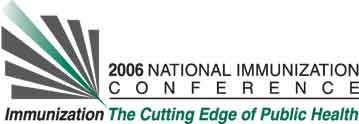Marlene M. Lugg, Kaiser Permanente, 13652 Cantara St, South 1 Bldg, Panorama City, CA, USA
Learning Objectives for this Presentation:
By the end of the presentation participants will be able to describe methods to improve pneumococcal immunization rates for high risk individuals.
Background:
Southern California Kaiser Permanente serves 3 million members in 11 medical centers and 60 medical offices. A centralized immunization tracking system (KITS) with over 26 million immunizations, and a Care Management Summary Sheet (CMSS) shows pharmaceuticals and laboratory tests for the past year. CMSS sheets are printed on hospital admission. For outpatient visits, KITS automatically prints out immunization history at check-in.
Objectives:
To improve pneumococcal immunization rates for persons with chronic and/or high-risk conditions.
Methods:
In 2003, if a high-risk patient had not received a pneumococcal immunization, CMSS began printing "Patient in High Risk Category for pneumonia, no record of pneumococcal immunization in KITS" on admission. The attending physician then ordered the immunization. The person administering the immunization enters all immunizations into KITS in real-time.
Monthly audits were conducted by each medical center's Immunization Coordinator using the patient clinic progress record, CMSS form, KITS, and chart review when needed. Results of deficiencies were presented to the individual physicians and department administrators.
In 2004, (one year after beginning the enhanced surveillance), the quality of the combined inpatient and outpatient immunization efforts were studied and compared to pre-2003 data. Comparisons were made to pre-implementation data.
Results:
Ninety-six (96) percent of in-patients were in compliance with pneumococcal vaccine recommendations upon admission. The high rate of compliance is largely due to the quality of reminder, recall, and physician reminders in the ambulatory care setting, thus immunizing high-risk patients before they require hospitalization. When all patients were studied (hospitalized and ambulatory), at-risk patients showed a 92+% pneumococcal immunization rate, up from 65% three years previously.
Conclusions:
Inpatient and outpatient monitoring with appropriate quality assurance follow-up increases the pneumococcal immunization rates to over 92% for high-risk groups.
See more of Posters
See more of The 40th National Immunization Conference (NIC)

